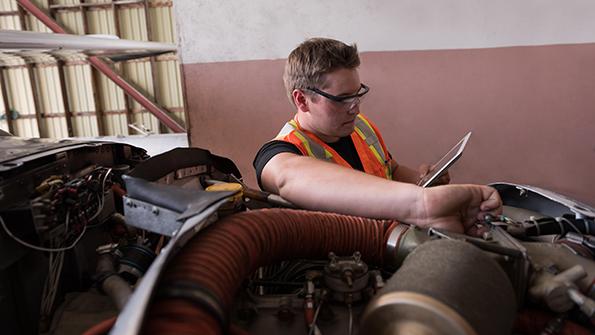Opinion: Regulatory Compliance Is a Matter of Reading Comprehension

FAA guidance on electronic record-keeping can cause uncertainty about regulatory requirements at repair stations.
“The FAA will authorize the use of electronic signatures, electronic record-keeping systems and electronic manual systems via OpSpec A025 . . . . The FAA will use OpSpec A025 as the method to convey FAA approval or acceptance for those items that require specific FAA approval or acceptance to be maintained, accessed or distributed electronically.”
The language above—with italics added for emphasis—is quoted from FAA Advisory Circular (AC) 120-78A, which provides guidelines for electronic record-keeping practices. Repair station certificate holders and applicants have been forced to become familiar with its instruction, as many inspectors have responded to trends toward digitization by imposing the requirement to hold OpSpec A025 on maintenance providers.
An AC is not mandatory and does not constitute a regulation. Despite that assertion leading the cover page of all agency guidance to the public, advisory materials often adopt language that sounds pretty darn mandatory. Right next to the “OpSpec Authorization Required” paragraph quoted above is another “requirement” for FAA acceptance “for certificate holders to use electronic signatures, electronic record-keeping systems and electronic manual systems to satisfy the requirements of Parts 91K, 121, 125, 133, 135, and 145.”
Regulatory compliance is a matter of reading comprehension. Regardless of what an inspector or guidance document may say, the regulations establish minimum standards for compliance. In the case of electronic record-keeping, Part 145 does not dictate the policies and procedures of any record-keeping system. Repair stations must only ensure that their manuals include “a description of the required records and record-keeping system used to obtain, store, and retrieve the required records” (see, §145.209(i)) and they “maintain records in English that demonstrate compliance with the requirements of Part 43” (see, §145.219(a)).
Aeronautical Repair Station Association (ARSA) Executive Director Sarah MacLeod shared the group’s perspective in 2020 on the supposed need for “permission” for electronic record-keeping. (Inside MRO, August 2020, p. MRO7) MacLeod contended that the fuss over digitization seemed silly in the face of both the plain language of the rules and the government’s unquestioning comfort with older technologies. Referencing the rulemaking preamble to the 2001 rewrite of Part 145, MacLeod explained that a certificate holder could use any method of record storage it chose to if documents were available and current, whether by “hammer and chisel or a document management system controlled by [information technology] administration.”
The repair station rule stipulates that records be kept (e.g., §§145.161, 145.163, 145.215), applications submitted (e.g., §§145.51, 145.57), data stored (e.g., §145.109) and manuals maintained (e.g., §§145.207, 145.211) in a “format acceptable to” the FAA. Participants in ARSA training and readers of its “Layman Lawyer” series will note that FAA guidance regarding elements considered “acceptable to the Administrator” acknowledges that “the FAA’s active review and acceptance prior to use is not normally required.”
Considering that the government requires no certificate action—such as the inclusion of an OpSpecs paragraph—for any other means of records management, it cannot selectively impose its will on the public by requiring one in the instance of digital record-keeping. To paraphrase MacLeod’s point from 2020, if the information is chiseled in stone, the FAA does not ask where it was mined; if a maintenance release is signed in pen, an inspector does not get advanced say in the choice of ink.
The agency’s authority allows it to test the ability of maintenance providers to “obtain, store and retrieve” required records, not to question the specific elements used to do so. Under performance-based rules, a certificate holder or applicant needs to show compliance with the plain language of a rule; it need not bend to prescriptive requirements on how to control its documentation.
This point matters not just in the specific instance but in compliance efforts in general. Particularly as the aerospace industry seeks to embrace “emerging” technology and build momentum on exciting technical advances (which have repeatedly been touted as the great attracting point for future talent), allowing agency hand-wringing over the use of new and different tools to meet age-old standards will slow progress. Whether it is a regulatory requirement or a required record, aviation safety compliance starts with whether you can read.
Brett Levanto is vice president of operations of Obadal, Filler, MacLeod & Klein, P.L.C., managing firm and client communications in conjunction with regulatory and legislative policy initiatives. He provides strategic and logistical support for the Aeronautical Repair Station Association.




